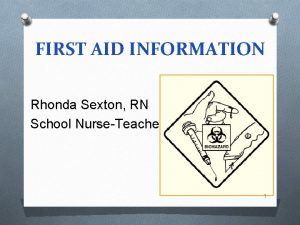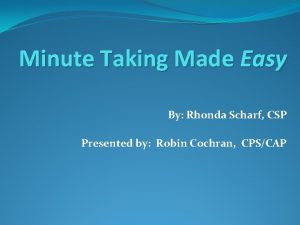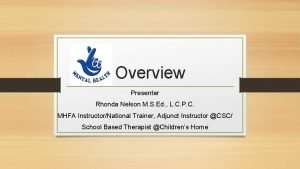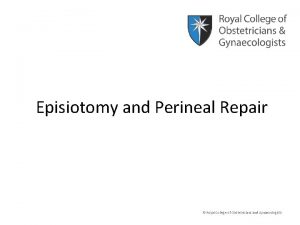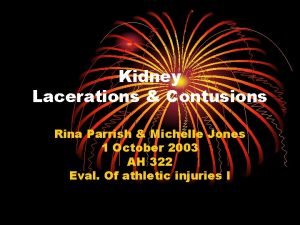Repair of Perineal Lacerations A TraintheTrainer Workshop Rhonda











- Slides: 11

Repair of Perineal Lacerations: A “Train-the-Trainer” Workshop Rhonda A. Sparks, MD University of Oklahoma Family Medicine Residency Program, Oklahoma City, Oklahoma Andrea D. Beesley, Ph. D Mid-Continent Research for Education and Learning, Aurora, Colorado Andrew D. Jones, MD Exempla Saint Joseph Family Medicine Residency Program, Denver, Colorado 1

Workshop Schedule Introduction Instructional design and evaluation Instructions and practice session 1 Break Practice session 2 and evaluation Closing 2

Introduction Origin of project Instructional design/evaluation Contents of packet Prepare for practice session Do it! 3

Procedural Learning Goals 1. Recognize a situation in which the procedure is applicable. 2. Recall the procedure. 3. Apply the steps in the procedure. 4. Make decisions at decision points, if applicable. 5. Confirm/disconfirm that the procedure has been correctly applied. Source: Smith, P. L. & Ragan, T. J. (1999). Instructional Design. 2 nd ed. New York: Wiley. 4

Design Decisions Clarify and list its steps and decisions 1. Describe steps in clear sentences. 2. Construct a task analysis 3. Each step should represent a single elementary action 4. If possible, each decision should only have two choices. Branches from a decision should not exceed five. 5

6

7

Events of Instruction Deploy attention Establish instructional purpose Arouse interest and motivation Preview lesson Recall relevant prior knowledge Process information and examples Focus attention Employ learning strategies Practice Evaluate feedback Summarize and review, transfer knowledge Remotivate and close 8

Learning Strategies for Procedures Simulation (does not always have to be realistic) Mnemonics Job aids Flowcharts Checklists 9

Evaluation Not the same as practice Remember to evaluate their decision criteria on whether the procedure is appropriate Ask learners to repeat the order of steps Consider direct observation, peer evaluation 10

Making the Model Go to workshop instructions 11



